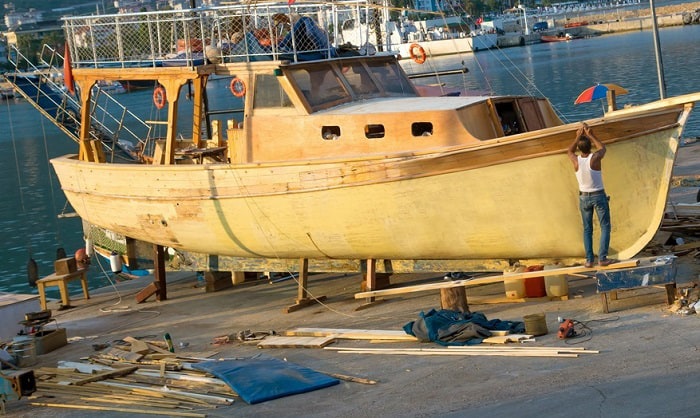
Build Your Own Lightweight Wooden Dinghy: A Step-by-Step Guide
Embrace the timeless allure of a wooden dinghy, and embark on a journey to create a graceful, lightweight vessel that reflects your passion for craftsmanship. This guide will equip you with the knowledge and step-by-step instructions to build your own dinghy, a project that will challenge your skills and reward you with a sense of accomplishment.
Planning Your Dinghy
The first step is to meticulously plan your dinghy's design. Choose a plan that aligns with your skill level, available tools, and desired size and features. Consult with experienced boat builders, browse online resources, or purchase a reputable dinghy design plan.
Consider These Key Factors:
- Length and Beam: Determine the size that suits your intended use, whether for leisurely rowing, fishing, or small-scale sailing.
- Materials: Select lightweight, rot-resistant woods like cedar, mahogany, or plywood for the hull and spars.
- Construction Methods: Choose from traditional lapstrake, carvel, or stitch-and-glue techniques, each with its unique challenges and aesthetic appeal.
Gathering Your Tools and Materials
Once you have a plan, assemble the necessary tools and materials. This step requires meticulous preparation and attention to detail. Acquire high-quality tools that will ensure accurate and efficient construction. Invest in a comprehensive set of woodworking tools, including a table saw, band saw, router, drill press, and hand tools.
Essential Materials Include:
- Lumber: Acquire your chosen wood species in the required dimensions, ensuring it is free from knots and defects.
- Epoxy Resin and Hardener: Use epoxy resin for bonding, sealing, and waterproofing the hull.
- Fiberglass Cloth: Utilize fiberglass cloth to strengthen and protect the hull from water damage.
- Hardware: Purchase necessary hardware, including fasteners, oarlocks, rowlocks, and any other fittings required for your design.
Building the Hull
Now, let's get hands-on! Start by carefully cutting and shaping the planks for the hull, using the provided plans as your guide. Use a table saw and band saw for precision cuts, and a router for shaping and smoothing the edges. Employ a combination of epoxy and screws to join the planks together, creating a strong and watertight hull.
Laying the Planks:
- For lapstrake construction, overlap the planks, carefully fitting them together and securing them with screws and epoxy.
- For carvel construction, use a smooth, continuous surface with planks joined edge-to-edge and sealed with epoxy.
- For stitch-and-glue, stitch the planks together with wire or staples and glue them with epoxy, creating a durable and lightweight hull.
Adding the Deck and Interior
Once the hull is complete, construct the deck and interior. This involves carefully cutting and fitting plywood panels for the deck, then building bulkheads, seats, and any other internal structures. Be sure to reinforce the deck with stringers and beams to create a sturdy platform.
Finishing Touches:
- Sand the hull and deck surfaces to a smooth finish, using progressively finer grit sandpaper.
- Apply several coats of marine-grade paint or varnish to protect the wood and enhance its beauty.
- Install the hardware, including the oarlocks, rowlocks, and any other fittings required for your design.
Launching and Enjoying Your Dinghy
With your dinghy complete, the time has come to launch it into the water and experience the satisfaction of your hard work. Take your time to admire your creation, and enjoy the thrill of gliding across the water. As you navigate tranquil waters, you will appreciate the unique character and craftsmanship of your wooden dinghy.
Remember, this is just a general guide. Consult your chosen dinghy plans for specific instructions and modifications tailored to your design. Enjoy the process, and let your wooden dinghy become a cherished legacy of your skills and passion for boat building.






No comments:
Post a Comment
Note: Only a member of this blog may post a comment.